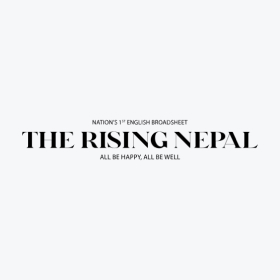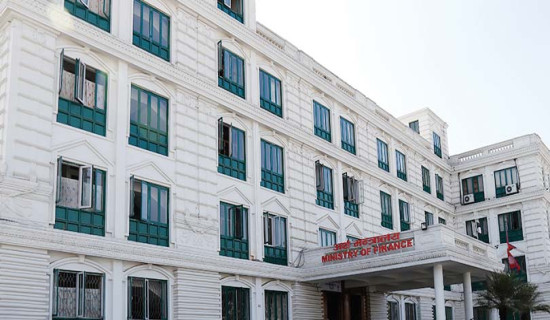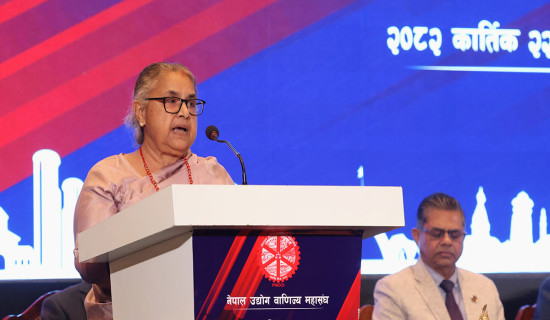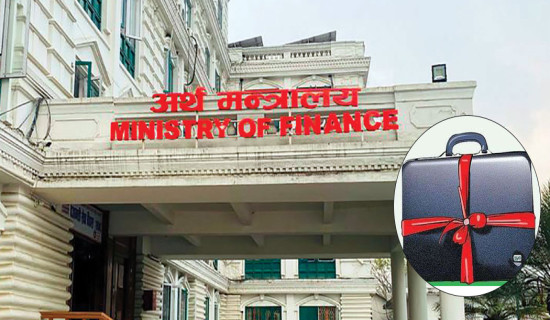- Wednesday, 19 November 2025
Bridging Nepal's Connectivity Gaps
The Kathmandu Terai Expressway significantly reduces the travel distance from Kathmandu to Nijgadh by 193 km and slashes nearly five hours off the journey time under normal traffic conditions. This Asian-standard highway facilitates better connectivity of Kathmandu to the southern plains, including the capital city of Bagmati Province, Hetaunda, and one of the industrial centres of the country, Birgunj. After the completion of the Expressway, people can travel from Hetaunda to Kathmandu in about two hours in a comfortable and comparatively risk-free manner. Express travel through the fast track road will be made possible by six tunnels of more than 10 km distance and about 89 bridges that would make a combined length of 8 km.
There are multiple connectivity options between Kathmandu and Hetaunda, but none is shorter than three hours. Meanwhile, those entire road connections were severed by the floods and landslides caused by the torrential rain in the last week of September this year. The disaster claimed the lives of 239 people, while 18 individuals are still missing.
Many of those lives were lost along the road, multiple vehicles were buried under the debris or landslides—three vehicles buried in the mudslide in Jhyaple Khola of Dhading district that claimed the lives of 35 individuals is one example. According to the statistics maintained by the Traffic Police, about 2,500 people lose their lives in road accidents across the country every year. A narrow road with steep elevation and sharp bends is one of the primary causes of those accidents.
This analogy stresses the need for better road infrastructure facilitated by bridges and tunnels. Considered the first tunnel project on a national highway, the Nagdhunga Tunnel shortens the road journey by 7.5 KM but might reduce the travel time by more than half an hour. While countries having similar topography to Nepal have long been in tunnel and bridge construction for the road and railway projects, this country is lagging due to the severe dearth of financial resources, technical know-how, and vision for the infrastructure development.
Mountain roads with sharp bends not only increase the risk of accident but also delay travel and transportation. It has negatively impacted the tourism industry as tourists are apprehensive of visiting the destinations out of the Kathmandu Valley.
A Croatian tourist was so scared during the Kathmandu-Pokhara travel last month that he would consider twice before making a road trip in Nepal. Tunnels can address this fear and uncertainty.
Bad roads create woes during the festivals. About 1.8 million people are travelling to their homes from the Kathmandu Valley alone. A large number of people also travel to their houses in villages or towns from the provincial capitals and industrial cities.
Bridges and tunnels
Tunnels and bridges face fewer disturbances from the floods and landslides and immensely help in mobilising the rescue teams and relief materials during hard times. They also create better connectivity in the hilly and mountainous areas where infrastructure development is costly and challenging and their management demands a huge amount of money. For example, the government has spent more than Rs. 650 million in the maintenance of Karnali Highway in the past two years. There are about 500 landslides along the 145-km Kathmandu-Narayangadh road.
This long journey has increased the cost of trade, caused inflation in the domestic market, and decreased the competitiveness of Nepali goods in the international market. Obstruction-free transportation could be a great boon for the producers and traders, especially the farmers, of perishable items like vegetables, fruits, and dairy items. It also reduces the imports of petroleum fuel, vehicles, and their spare parts, which together make the largest import of the country, and can have a positive impact on the trade balance and foreign exchange reserves. Reduction in the cost of trade has long been a primary agenda of the government, but for the past several decades only lip service has been paid to this notion. This inertia and indifference on the part of the government and infrastructure agencies is exhibited in the national highways and other transportation infrastructure.
Tunnelling and bridging the roads can be instrumental in the preservation of heritage sites and agricultural land along the road. There will be fewer disturbances to the vulnerable topography and young mountains like Chure Hills. As they are better engineered for safety and durability, there are fewer chances of landslides and other damages.
A 100-150-meter bridge in Jhyaple Khola, instead of a sharp bend above a narrow culvert, would have averted the recent disaster, and there would have been less uncertainty in travel and transportation if similar strategies were adopted in such critical locations.
If the roads and railways are reliable, people prefer public transport over their personal passenger vehicles. This means less emission of carbon dioxide and environmental pollution, which will result in better public health and increased productivity of people.
Way forward
Development of tunnels and large motorable bridges is easier said than done, particularly in a country that has hills and mountains in 83 per cent of its land. While the very hills and mountains create the need for the tunnels and large bridges, their topography creates complexity and poses challenges in the development work. Likewise, ecological challenges are paramount, especially in the Chure region. They demand sound planning and efficient execution of the development projects, be it a tunnel or a road on the surface.
Nepal still doesn't have an efficient institutional setup for the tunnels, although a division is created for the bridges at the Department of Roads. While the Nagdhunga tunnel is developed by a Japanese agency, construction of the motorway is also delayed because of the delay in the tender process, as neither the Nepal Army nor any other national agency was competent in conducting the feasibility study, the detailed project report, or constructing them.
Technology transfer is another area of concern. There are a couple of instances within Nepal—the Melamchi Water Supply Project and the Babai Irrigation Project—that better technology reduces the cost of development and expedites the construction. With the use of Tunnel Boring Machine (TBM), Babai Irrigation Project completed the tunnel construction ahead of the stipulated time, while the MWSP witnessed sluggish progress in its absence.
Similarly, lack of understanding and willpower in the government and concerned agencies is another obstacle in this regard. While a section of the bureaucracy and policymakers make fun of the visions to create large tunnels and bridges, another section discourages such visions and planning, citing the shortages of funds, technology, and human resources. It is also true that the country has a shortage of skilled engineers and geologists to move ahead with the tunnelling and construction of large bridges. Hence, the government should immediately formulate a long-term policy and short-term development plan for the construction of tunnels and bridges. International Development Partners and other donors should be asked to channel their financial support to this very need of national development.
(Dhakal is a journalist at The Rising Nepal.)














